Standard Capacity Magazines Are Essential For Armed Self Defense
It’s 3 AM. Some cultures held this time as being the peak of the “witching hour” when strange and dangerous things were likely to happen. There’s a creak, a sudden crash. Maybe the dog barks, if you have one. Hopefully a motion sensor-equipped home alarm blares insistently.
Regardless of your alert system, you are now awake. Most likely groggy, you know something is afoot regardless. Vaguely recalling reports of an uptick in crime that has especially manifested itself in the “progressive” city you live in, you go for your quick-access gun safe, which contains a firearm acquired after navigating the painstaking bureaucratic maze put in place by your supposedly duly-elected representatives. The firearm itself is a solid piece of engineering, a GLOCK 17, outwardly identical to the duty pistols carried by the local police forces.
Identical, except for 1 thing, the polymer-and-steel magazine can only hold 10 rounds of 9mm ammunition, as mandated by law. Standard-capacity magazines of 17 rounds are forbidden from being purchased, or even possessed by citizens in your jurisdiction.
Regardless, you’re somewhat confident of your accuracy. After all, those hollow-point 9mm rounds you purchased (after a background check!) passed the FBI protocol you read about on The Mag Shack’s blog.
Pistol in hand, you go downstairs towards your living room. The noise you heard wasn’t your teenage son sneaking in late after a night out with his friends. It was two shadowy figures, rapidly helping themselves to the contents of your entertainment center and nearby desk. One is depositing your laptop and speakers into a backpack, and the second figure is standing warily, with what could be a firearm of his own in his hand. Shouting a warning, you raise your pistol, ready to defend.
The second figure’s response to the warning is a curse and a rapid string of gunfire. Dodging, you respond in kind. Bang, bang, bang, bang, bang. Since it’s dark and the adrenaline dump hit you, those first shots fail to connect with the armed trespasser. They all went wide right. Your fine motor skills normally present even during a range session, just took a vacation. The aggressor, already ahead on the “power curve”, is rushing you, firing his weapon once again. You open fire once again at the barely discernable shape running across the room at you. Bang, bang, bang, bang, bang, bang.
Click.
The aggressor is now bad-breath distance away from you. Your firearm is empty, and the spare magazine is upstairs in the safe. You have no second gun with which your significant other can defend herself with. Your state limits you to one firearm purchase per month, and it took 90 days of waiting to get cleared to purchase the now-empty GLOCK in your hand.
Your attacker, unencumbered of a sense of abiding the law, has a (likely stolen) firearm, a Beretta 92, with a standard capacity magazine. You shot 10 rounds, plus the one in the chamber. He’s still got 7 or 8 rounds left.
It’s his move…
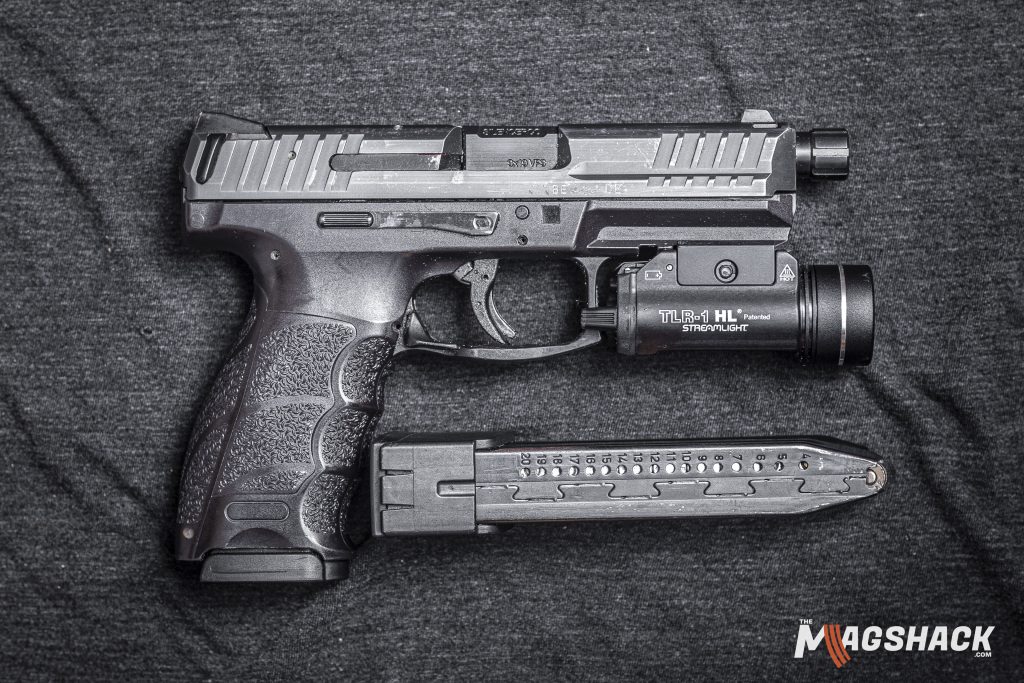
A H&K VP9 9mm pistol with a 20 round magazine
More Ammunition “On Tap” Is Better
The worst sound in an armed defensive situation one can hear is a click, when a bang is expected. It’s either a malfunction, or more likely, your firearm has run dry of ammunition during the heat of a conflict. Our hypothetical home defender in the introduction ran dry early, earlier than he should have due to his jurisdiction’s insane restrictions on firearms and firearm magazine possession.
Of course, those who support the Second Amendment have all heard the arguments against standard-capacity magazines. A credulous talking head on the news will claim that a 30-round Magpul PMAG in an AR-15 will enable a so-called “mass shooter” to more rapidly engage in carnage, that sort of thing. Or the media will trot out a hunter, who says he only needs 1 shot to take down a deer, and that if anyone needs more than 10 rounds, they need to “practice more”.
In both cases, the proponents of those lines of thought ignore the stark reality of a defensive encounter. It’s an uncontrolled and chaotic situation, where all the norms of civil conduct are tossed aside for a primal and raw fight for life and liberty.
When the chips are down, ten rounds will go awfully fast.
In a clean and controlled range environment, it’s a trivial matter for even a novice to land ten rounds on paper, in the displayed “bullseye” of any manner of standard targets. Well-lit and air-conditioned, the indoor range is great for honing fundamentals but does not reflect the gritty reality of a defensive situation.
Several factors come into play in a defensive encounter, whether it’s inside the home or the outside.
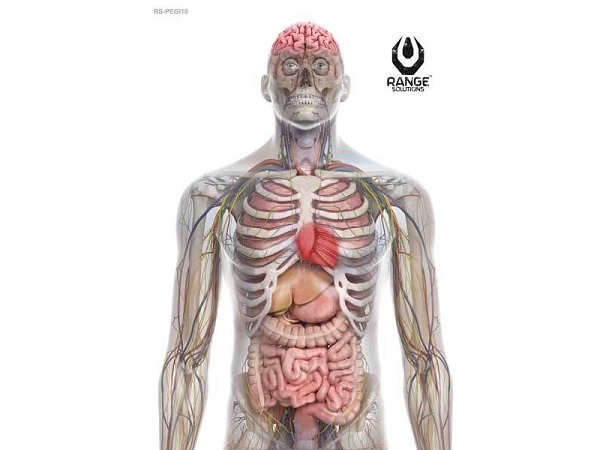
Anatomy of the Human Body
For Lack Of A Better Term, Biology
Yes, biology. In a defensive encounter, you will be facing off against another human being. A being with basically the same organs, muscles, bones, and brain as you. Depicted above is an image of the human torso and head. The torso is something that your firearms instructor will (hopefully) refer to as “center mass”. It’s the biggest part of the body, and it houses most of the organs and systems needed to keep a human going. The heart, lungs, spinal cord, large veins and arteries, that sort of thing. Ideally in a defensive situation you want your rounds to strike these.
But note that those vitals are protected by muscle, bone, fat, and clothing. Each of those things can and will impede the progress of a projectile. It’s been known for hollow-point rounds to be rendered ineffective by thick clothing, even. While the round will travel through the clothing and the outer layers of tissue in a target, the energy simply isn’t there anymore to score a successful “fight stopper” of a hit on the vitals. You’ll need to put more rounds on target to end the encounter.
If you can. As depicted in the hypothetical situation in the introduction to this article, the defender’s fine motor skills are absent. That fight-or-flight instinct kicks in, and the prime recipients of all that adrenaline are the big muscles for running, punching and kicking. Your brain is shouting “do something!” and your body is responding. To be certain, many hours of defensive firearms training can counteract this uncontrolled burst of responsive energy, i.e. remaining controlled enough to retain fine motor skills under duress, but in the case of a defensive encounter, the attacker is picking the time and place, not you. He isn’t going to wait for you to attend a force-on-force class and come back for the fight.
The attacker’s biological state comes into play as well. Certainly, his fine motor skills may be absent, but not to the degree that yours are. He’s the one who planned this surprise, after all. Also, a fringe “benefit” of adrenaline is that it “proofs” the human system into being able to take more damage than normal, and not immediately feel pain. It’s why in defensive firearm encounters, we will often see the involved parties appear to soak up bullets. Furthermore, it’s also likely that an assailant has chosen to partake in consuming alcohol (the old liquid courage), or even recreational/illegal drugs prior to his attack. An attacker on a psychoactive street drug like PCP may not even feel gunfire. Pain is a warning system, and his is shut off. He’s going to keep coming until his heart stops or his brain shuts down. Ten rounds of 9mm ammunition were shot, six of which missed, and out of the four that hit, two were in the vitals? He’s still going to have some fight left in him.
Also, remember that a firearm is operated by hand. The assailant could be down, but if his hand is able to move, he can press a trigger. Stop the hand from moving, and he cannot press a trigger. The object of an armed defensive encounter is to shoot to stop the threat completely.
More ammunition on tap in one magazine is going to save your life. Because even a magazine change can be fumbled, and then you’re left with an empty firearm, and scrambling for a dropped magazine in the dark.
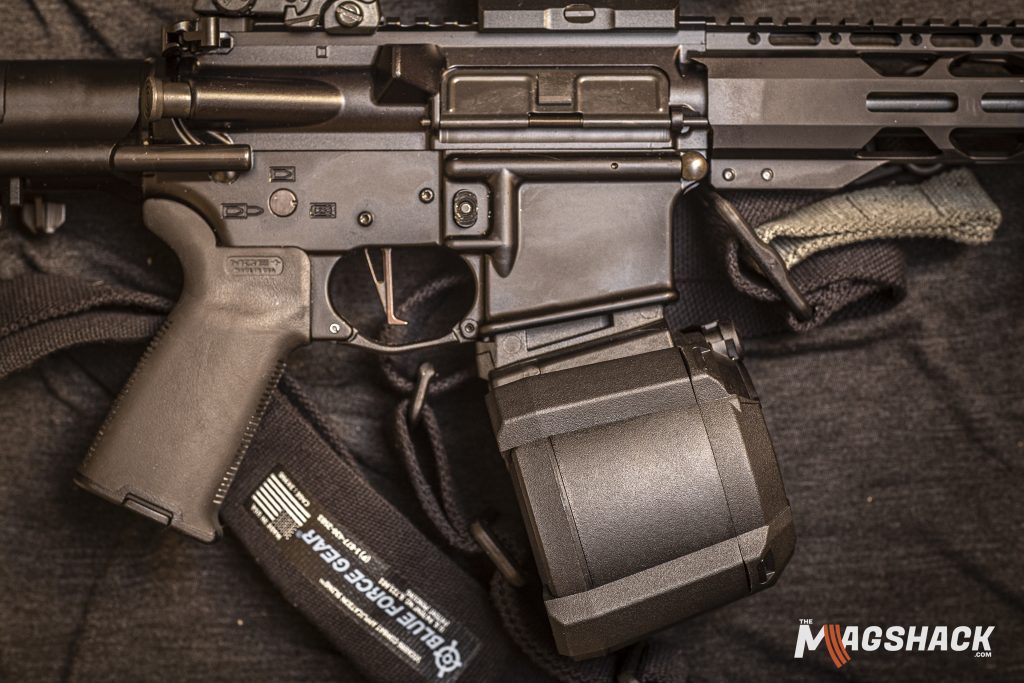
A Magpul D60 60 round drum for an AR-15 chambered in 5.56x45mm
Other Factors In A Defensive Firearm Encounter
Certainly, biology isn’t the only factor in the dirty details of a defensive encounter. In today’s day and age, attackers tend to operate in groups. Whether it’s a home invasion or a street attack, the plan is to execute it using a group of people. It’s much easier to overwhelm even a trained defender with multiple angles of attack. Also in a situation where larceny is the prime goal, a “crew” is preferred, where one or two assailants stand watch or hold hostage the victims, while the rest pilfer the premises at leisure.
When multiple assailants are involved, having a restricted-capacity firearm as your only means of defense is not ideal. Again – the more ammunition immediately at hand, the better.
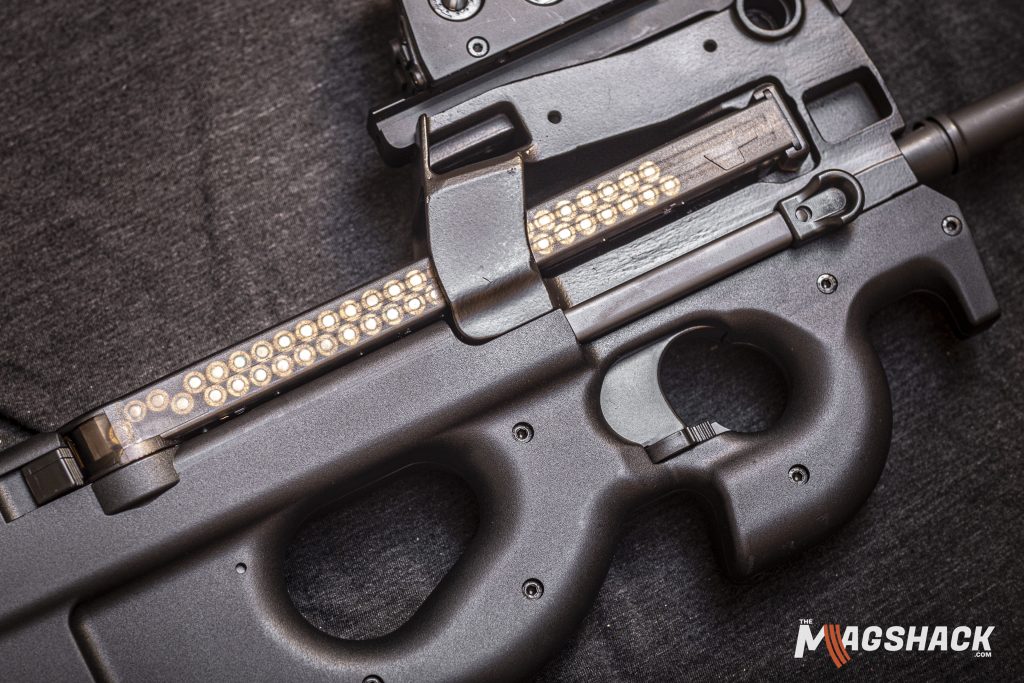
An FN PS90 rifle chambered in 5.7x28mm with a 50 round magazine
The Solution to Restricted Capacity Is Standard (Or Better) Capacity Magazines
The easiest solution is to have more ammunition immediately available. Sure, with practice, one can execute magazine changes in a second or two, but the “practice” is usually in a range somewhere or a quiet room, not in the middle of a fight. Magazine changes under duress require some fine motor skills, and as has been noted, those skills are the first to go in an attack.
The goal of course is to neutralize the aggressor. Your first shot may go wide. Your second shot may hit, but in an extremity. Your third shot may be center mass, but it gets hung up by clothing, fat, etc. The remaining shots may hit true and hit vitals, but even accounting for that, it generally takes time for a person to stop responding when hit in a vital place. It may be 10 or 15 seconds, but that’s 10 or 15 seconds where the aggressor can manipulate a weapon. Keep shooting until he stops moving. Again, shoot to stop.
With just one attacker, you’ll need ten or more rounds. Multiple assailants, you will need everything you can get, right away – regardless of caliber. Whether your chosen cartridge is 9mm, .45, or anything in between – it will almost always take more than one shot to stop a threat.
Armed agents of the state always have their firearms with standard-capacity magazines. Why? To effectively deal with threats. No government agency or force in any nation on the planet issues firearms with reduced-capacity magazines to their employees. These professional users often carry as much ammunition as they possibly can. In one famous encounter, Skokie PD police officer Timothy Gramins had to shoot at an assailant 33 times, connecting 14 rounds of .45 ACP ammunition, in order to neutralize a suspect. The suspect had been shot in the head, even. At the end of the encounter, EMTs still detected vital signs. Officer Gramins only survived due to having standard capacity magazines on hand and the ability to send more rounds downrange at the suspect.
The threat against a citizen is the same as it is against a government employee. An armed person is attacking, the proper response, to paraphrase the Dalai Lama, is to respond with your own gun. The dynamics of physics, environment, biology, and chemistry dictate having as many rounds immediately available as humanly possible. Whether it’s 30+1 rounds ready to go in a PMAG for an AR-15, or it’s 17+1 in a 9mm GLOCK magazine, it is paramount to have the maximal amount of defensive firepower on hand. Your life is worth defending, equip yourself with that in mind.
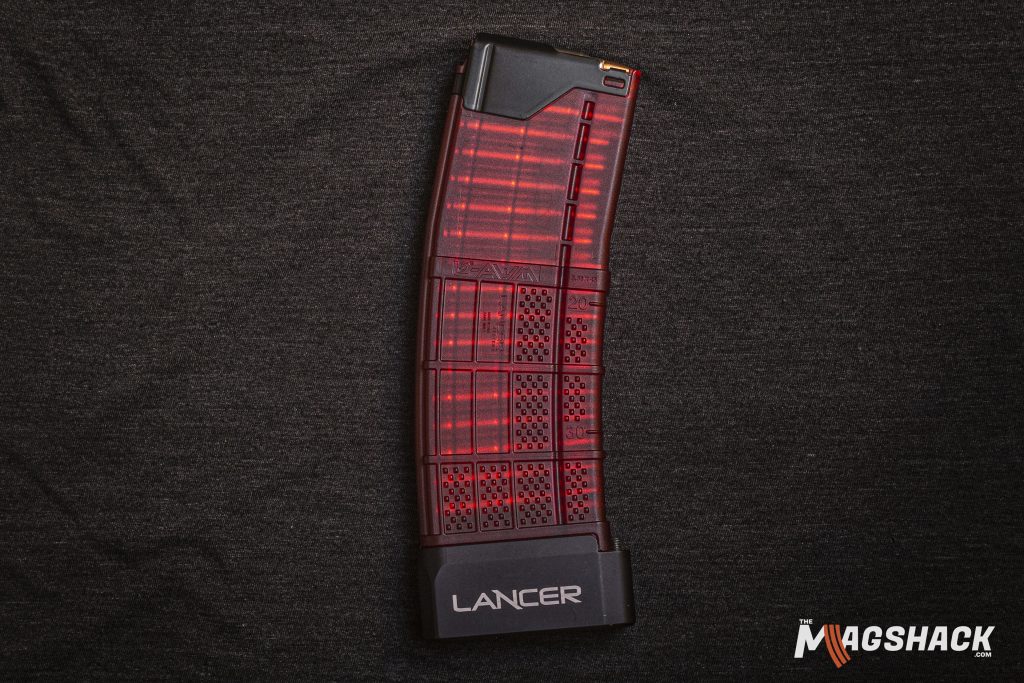
A Lancer L5AWM 30-round AR-15 magazine with a +6 baseplate extension
Addendum: The Political Realities
In most states of the Union, it’s easy to talk a good game about magazine capacity. An AR-15 ships and is delivered with multiple 30-round PMAGs. One can visit The Mag Shack and have cases of a whole variety of magazines and drums shipped rapidly to your doorstep. One can even print a “good enough” standard-capacity magazine for any manner of firearm utilizing a 3D printer, and suffer no legal consequences.
However, in a troubling minority of states, the sale, and even the mere possession in some cases, of standard capacity magazines is illegal. Now, it’s not to say the police in those jurisdictions are specifically hunting down possessors of 30-round PMAGs, for example, but they will prosecute if they happen to find you are in violation of the law. And in not so many words, the court system is no fun. Even if you escape jail time, your right to keep and bear arms will be severely repressed, often for life.
With that in mind, The Mag Shack does sell restricted-capacity magazines for customers “trapped behind enemy lines”.
But there is a light at the end of the tunnel. As a result of the groundbreaking Bruen decision in the Supreme Court, laws repugnant to the Second Amendment are poised to be stricken down, especially those with little to no historical context. While the process is long and arduous, the first laws to be stricken appear to be magazine capacity bans. Soon, even those in blue states will get to enjoy and possess standard-capacity magazines, legally.